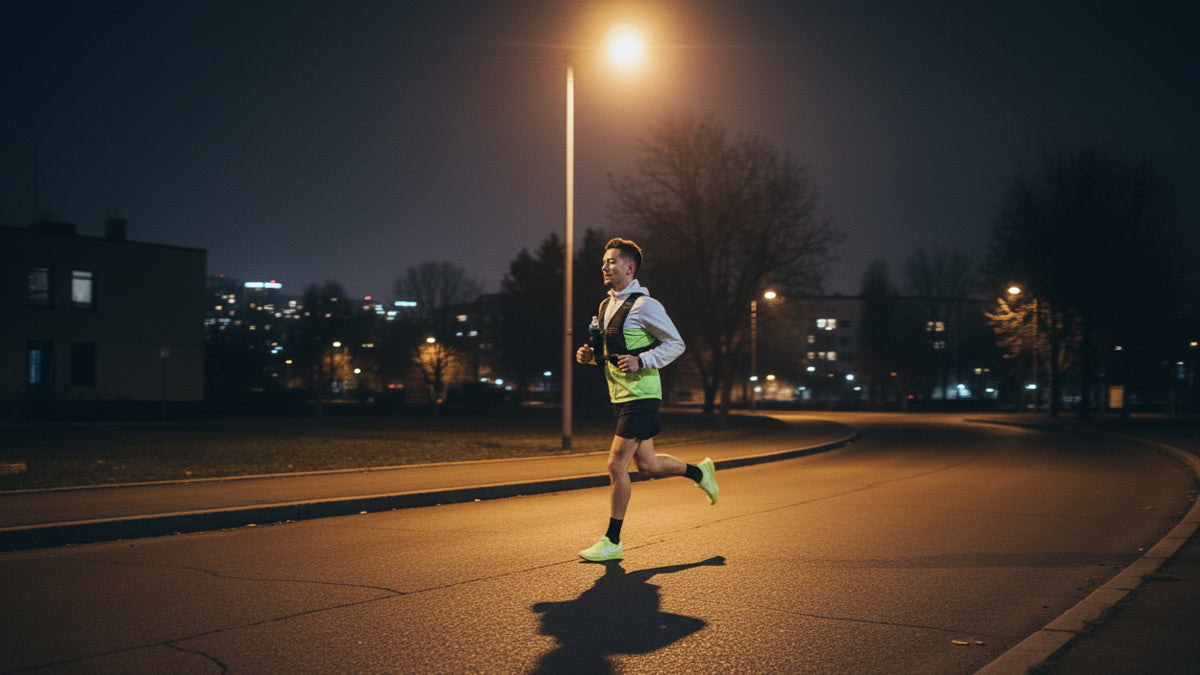When the cold hits Ireland, your running gear makes all the difference. Whether it is dark evenings, icy mornings, or that unmistakable chill off the sea, a running vest can keep you comfortable, visible, and organised while you clock the miles. This guide covers exactly what to look for in a running vest Ireland runners can rely on, from fit and visibility to storage and care, so you can stay confident on every winter run. See our running vest range if you want to compare fits while you read.
- What is a running vest
- How to choose the right running vest
- Winter setups that work in Ireland
- Running vest vs running jacket
- Care and longevity
- Notes from real-world testing
- Final thoughts
What Is a Running Vest and Why It Matters
A running vest is a lightweight, sleeveless layer that gives you freedom of movement while keeping essentials close. It is not a bulky jacket or a backpack. It sits comfortably against your body and lets you reach pockets without fuss. For Irish conditions, a winter running vest is ideal for changeable weather. Wear it over a long-sleeve top on dry days or under a shell when showers roll in. The right vest adds warmth and useful storage without overheating, which suits everything from 5K jogs to longer weekend runs.

How To Choose the Right Running Vest
Use this checklist to pick a vest that works for Irish winter running. Keep comfort first, then add the features that match your routes and routine.
1) Fit and comfort
- Look for adjustable points that let the vest sit snug without restricting your breathing or shoulder movement.
- The vest should not ride up, chafe, or bounce at your usual pace.
2) Visibility and reflectivity
- Short days mean early mornings and evening runs. Prioritise reflective panels or piping that is visible from the front and the back.
- Bright or contrast colours help when you share the road with traffic.
3) Pockets and storage
- Choose enough pocket space for phone, keys, a card, and gels without bulk.
- Check for zip security on at least one pocket for valuables.
4) Weather resistance
- Light wind resistance keeps your core comfortable on breezy days.
- Water-repellent face fabrics help in drizzle. Avoid heavy insulation that traps too much heat while you move.
5) Men’s and women’s cuts
- Women’s vests often have a slightly shorter torso and narrower shoulders. Choose the cut that best matches your build.
- If between sizes, size for a close fit over a base layer. You can always add a shell on top for rain.

Winter Setups That Work in Ireland
Match your vest to the day rather than the calendar. These simple setups cover most winter conditions here.
- Cool and dry, about 6 to 9 °C: Thermal long-sleeve, running vest, light gloves if needed.
- Cold and breezy, about 3 to 5 °C: Thermal base, running vest, thin shell for wind on exposed routes.
- Showery day: Breathable base, running vest for storage and visibility, packable rain shell for the heavier bursts.
Add a cap or headband for warmth, and keep reflective elements visible from front and back. Safety comes first on rural roads and suburban routes.
Running Vest vs Running Jacket
Both have a place. A running vest focuses on movement, breathability, and easy access to pockets. A jacket provides fuller protection from wind and rain. Use this as a quick guide.
Choose a vest when:
- It is four to ten degrees outside and you plan to layer.
- You want freedom through the shoulders.
- You prefer quick access to pockets without bulk.
Choose a jacket when:
- It is heavy rain or close to freezing.
- You will be on very exposed routes for long periods.
Care and Longevity
- Wash on a cool, gentle cycle to protect reflective details.
- Avoid fabric softeners, they reduce water repellency over time.
- Air dry flat. High heat can affect fit and elastic recovery.

Our Experience Putting It To The Test
We took our running vest out on wet Dublin backroads, early morning trails, and night-time city loops. Fit stayed close without bounce, reflective hits showed up well under street lights and headlights, and breathability felt solid even under a light shell. Pockets kept a phone and keys stable. That combination of comfort, visibility, and simple storage is why a vest becomes a winter staple once you try it.
Final Thoughts
A running vest is a simple upgrade that helps you run through winter with fewer excuses. It keeps your core comfortable, carries the small bits you actually need, and improves visibility when daylight disappears early. Ready to find the right fit for your routes and pace? Explore our UltraX Running Vest, built for real Irish conditions.
Useful links: Shipping and delivery | Returns policy | Contact us



Share:
Should You Wear a Hydration Vest for the Dublin Marathon?